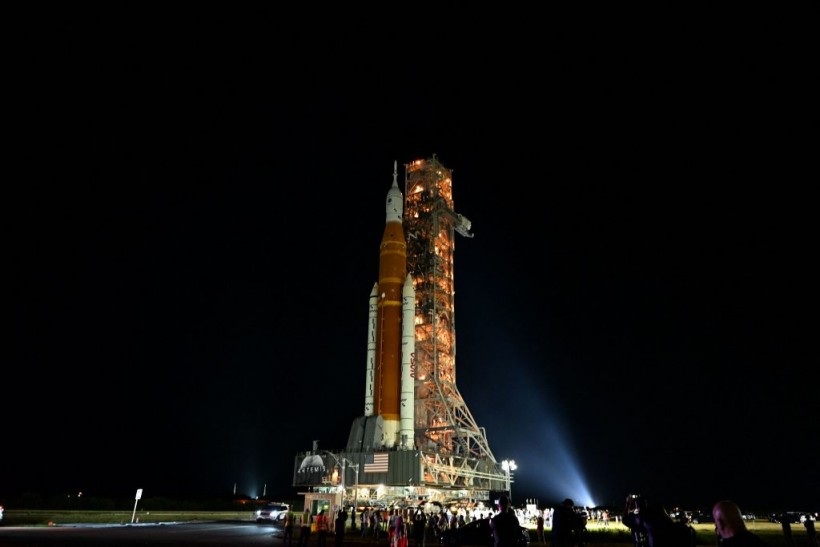The next attempt of NASA to launch its new megarocket on a test flight to the moon could lift off by September 23, though only if the agency is fixing a leak, not to mention receiving a critical waiver from the United States Space Force.
NASA's associate administrator for exploration systems development, Jim Free said that the space agency's Artemis 1 moon mission launch, the debut of its gigantic Space Launch System or SLS rocket, could lift off either on September 23 or September 27, Space.com reported.
The said launch dates rely on a number of requirements, including NASA obtaining a waiver for the extension of time required to check batteries on the flight termination system or FTS of SLS, which is designed to destroy the rocket if it veers off course during liftoff.
Essentially, the US Space Force, overseeing the Eastern Ranged employed for Florida rocket launches, requires NASA to test the FTS every 25 days, a process requiring the 322-foot-tall rocket to leave the launch pad and roll back to its hangar.
ALSO READ: Four Lightning Bolts Hit Towers Surrounding Artemis I Moon Rocket [Watch]

Artemis 1, an uncrewed test flight, will feature the first blastoff of the massive Space Launch System (SLS) rocket, which will be the most powerful in the world when it goes into operation. It will propel the Orion crew capsule into orbit around the Moon. The spacecraft will remain in space for 42 days before returning to Earth.
Artemis 1 Moon Mission
Artemis 1 is the first mission of the Artemis program of NASA to bring back astronauts to the moon b 2025. An uncrewed plan will test the SLS megarocket and its Orion spacecraft to validate that both are all set to fly astronauts.
Artemis 2, the first crewed Artemis mission, will take astronauts around the moon in 2024, with the Artemis 3 crewed landing one year later. All of that relies on a successful test flight of Artemis 1.
Even with the test waiver of the FTS, NASA has its hands full, attempting to get Artemis 1 all set for what will be its third attempt for launch.
NASA first attempted to launch the mission in late August, although it stood down because of an engine cooling issue traced to a bad sensor.
Issues to Deal With
Aside from the engine cooling issue, a persistent liquid hydrogen leak, beating three attempted fixes, led to the early September launch scrub.
There's a need for NASA to fix that leak by replacing a seal around an eight-inch fuel line on the core booster of SLS.
The American space agency is also working o a smaller fuel connector, which saw a different leak in late August.
This week, that particular work is ongoing at the Pad 39B launch site of the Artemis 1 rocket located at Kennedy Space Center in Florida, detailed in a separate Space.com report.
SpaceX plans to launch Crew-5, the next NASA astronaut crew mission, to the International Space Station in early October. That's another limitation for when the next flight of Artemis is, explained Free.
A report about NASA's Artemis 1 launch attempt is shown on Associated Press's YouTube video below:
RELATED ARTICLE: NASA Artemis 1 Moon Rocket Undergoing 'Critical' Series of Tests This Weekend in Preparation for This Year's Launch
Check out more news and information on Space in Science Times.




![Earth's Quasi-Moon Kamo‘oalewa Could Originate From Lunar Surface Not Asteroid Belt [Study]](https://1721181113.rsc.cdn77.org/data/thumbs/full/53275/89/56/50/40/earths-quasi-moon-kamo-oalewa-could-originate-from-lunar-surface-not-asteroid-belt-study.png)









